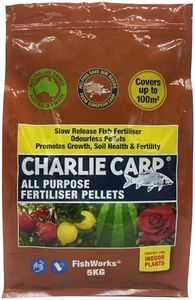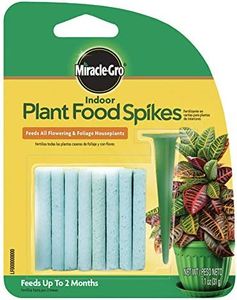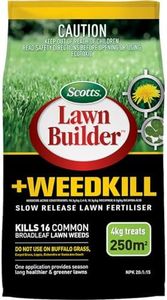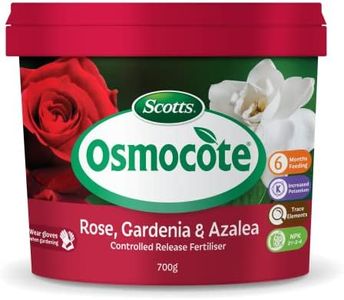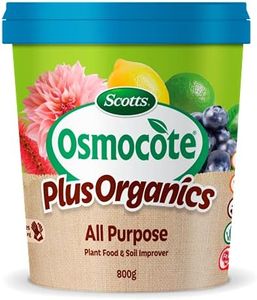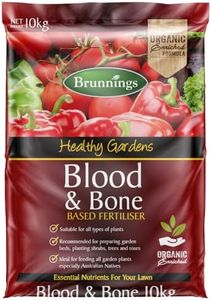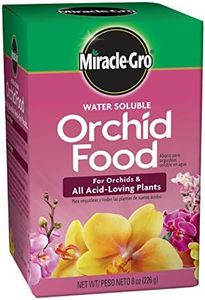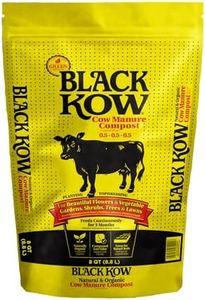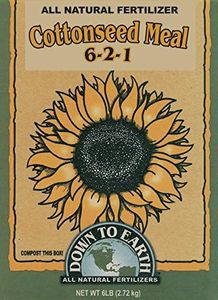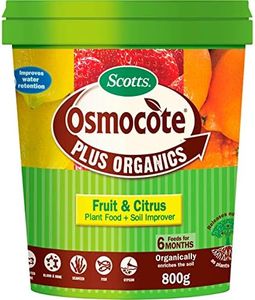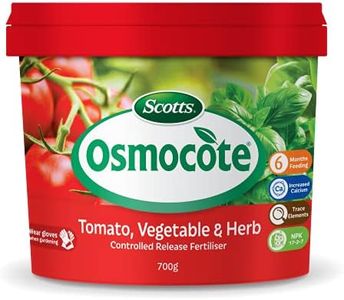We Use CookiesWe use cookies to enhance the security, performance,
functionality and for analytical and promotional activities. By continuing to browse this site you
are agreeing to our privacy policy
10 Best Compost Fertilizers
From leading brands and best sellers available on the web.Buying Guide for the Best Compost Fertilizers
Choosing the right compost fertilizer can significantly improve the health and productivity of your plants. Compost fertilizers come in many forms and types, each suited for different gardening needs. The main factors to consider include the ingredients, the method of composting, the nutrient content, and how easy the fertilizer is to use. By taking the time to understand these elements, you can pick a compost fertilizer that matches the demands of your soil, the kinds of plants you’re growing, and your gardening style.Nutrient Ratio (N-P-K)The nutrient ratio, often listed as N-P-K (Nitrogen-Phosphorus-Potassium), shows how much of these three main nutrients are present in the compost fertilizer. Nitrogen helps leaf growth, phosphorus contributes to flower and root development, and potassium aids overall plant health. Compost fertilizers can range from balanced ratios (like 5-5-5) to those that favor one nutrient. If you want lush green leaves, look for higher nitrogen; for flowers and fruit, more phosphorus is helpful. Consider your garden’s plant types and pick the nutrient ratio that best supports their needs.
Composition (Organic Matter and Additives)Compost fertilizers can be made from plant waste, animal manure, or a mix of both, sometimes enhanced with additional minerals or microbes. Pure plant composts are gentler but slower acting, while those with manure often provide quicker nutrient release. Additives like rock dust or beneficial bacteria can enrich the compost further. If you want a steady, mild feed, choose simple plant composts. For a more potent effect or to kickstart poor soils, consider blends with manure or added microbes, depending on the sensitivity of your plants.
Texture and Form (Granules, Pellets, Loose, Liquid)Compost fertilizers are available as loose compost, pellets, granules, or liquid concentrates. Loose compost works well as a soil amendment, while pellets and granules are cleaner to handle and distribute. Liquids act the fastest and are convenient for container plants. If you need a quick fix, choose liquid; for ongoing bed improvement, loose compost or pellets work well. Your choice here should align with your garden setup and how much effort you want to spend on applying the fertilizer.
Maturity (Age of Compost)Mature compost is fully broken down and dark in color, free of recognizable plant pieces or strong odors. Immature or 'hot' compost can burn plants or attract pests. Always choose fully mature compost for top-dressing or planting beds. If making compost at home, look for a sweet, earthy smell and crumbly texture as a sign of maturity; if buying, check for product descriptions noting that the compost is 'well-rotted' or 'finished.'
Source and CertificationsSome compost fertilizers are organic-certified or based on sustainable sourcing, meaning they don’t contain synthetic chemicals or questionable waste materials. If you’re growing food crops or have concerns about chemicals, look for composts with certifications or clear information on their source. For general ornamental gardening, standard compost is usually fine, but for sensitive plants or organic food production, the source and any certifications become more important to ensure safety and quality.

